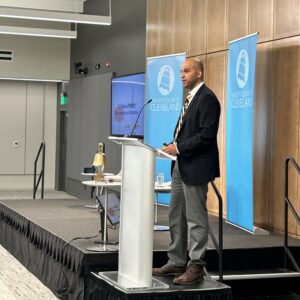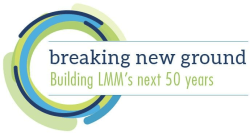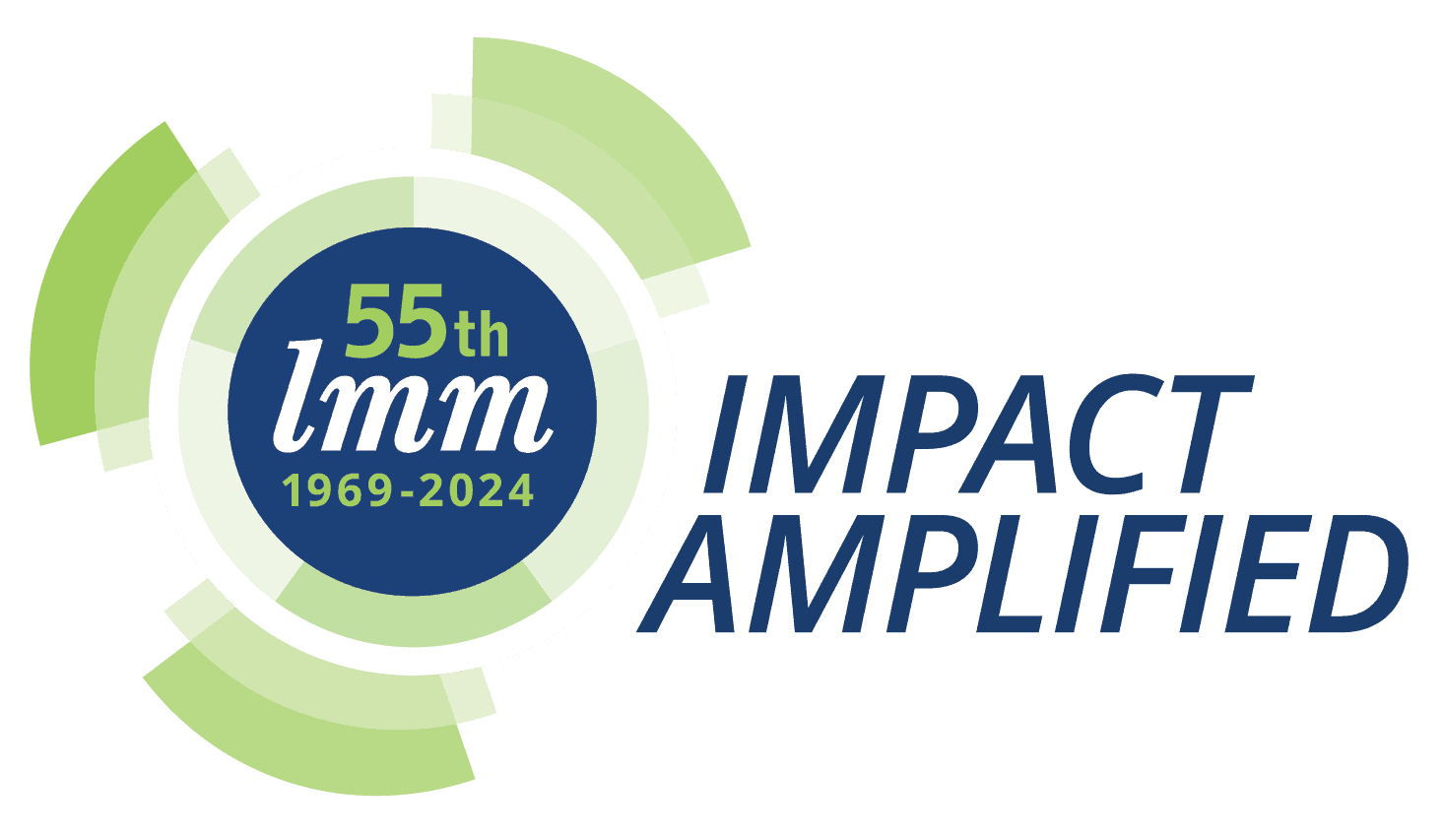Describe what AP4M does and how the drop-in center project came about. And what do you do at AP4M?
A Place 4 Me (AP4M) believes every young person deserves a place to call home. Using a collective impact approach, we work toward our mission to prevent and end youth and young adult homelessness in Cuyahoga County. To achieve this goal, we focus on three interconnected areas: systems-change, authentic youth partnership, and direct services to young people. Each of these areas has contributed to identifying the need for a drop-in center. Cleveland is the only major city in Ohio that does not have a drop-in center, making it a key missing piece of our system-response to youth homelessness in Cuyahoga County.
A Place 4 Me’s youth action board, REACH, consists of young people who have personally experienced housing instability. Since 2017, REACH has been at the forefront of advocating for a youth drop-in center. They’ve explained how having a drop-in center would have helped meet their needs when they were experiencing homelessness and tirelessly advocated for a drop-in center to help others. We also hear from young people we support with direct services that the current system isn’t meeting their needs. They’ve shared their need for a safe place to be that is not a shelter, where they can have something to eat, rest, charge their phones, do laundry, take a shower, and connect with needed resources all in one place. The establishment of the drop-in center aims to address a significant gap in our existing system, a gap that has been recognized by young people with firsthand experience navigating it.
What will the youth navigators be doing at the center?
AP4M currently employs four youth navigators who have firsthand experience with housing instability. This experience enables them to establish meaningful connections with young adults experiencing homelessness, as navigators uniquely understand what the young people are going through. AP4M’s navigators serve as supporters, working with young people in their journey toward securing housing stability and achieving their personal aspirations.
Navigators walk alongside young people as they work to obtain housing and meet their goals. They help young people to understand resource options and access the resources of their choice. For instance, a youth navigator might assist a young person who has lost their job by helping them access short-term rental assistance and aiding in their job search. Or, they may help a young person who is staying place to place to prepare for a new job by assisting them in obtaining child care, providing transportation so they can get to work until they earn their first paycheck, and helping them search for their own housing. At the drop-in center, navigators will extend their support by connecting young people with on-site partners, thereby broadening the scope of assistance available to them.
Who will utlilize the YDIC?
The youth drop-in center will serve young people ages 16 to 24 working towards housing stability. Each will be a unique individual with hopes and goals that the drop-in center team will help them accomplish. Based on the young people AP4M currently works with and national youth homelessness data, we know the drop-in center will serve young people coming from a variety of situations. About a quarter of those using the drop-in center will be young parents, working on housing stability not only for themselves but also for their children. Some young people will have experienced foster care, and may need supportive adult connections in addition to housing.
We also know that some groups of young people will be over-represented among young people using the drop-in center. Almost 80% of the young people AP4M serves are Black/African American, compared with 30% of the county’s population. These young people face additional challenges such as the impacts of systemic racism, the legacy of redlining, and racial discrimination in hiring. Young people who are part of the LGBTQ community, especially young people who identify as transgender or non-binary, are also overrepresented. These young people experience additional safety concerns including anti-transgender violence and a lack of affirming spaces. The drop-in center is intentionally being designed to meet the needs of young people who are part of these historically marginalized groups and work towards equity.
We know a few neighbors have led a charge, legally and socially, against the drop in center coming to fruition at 4100 Franklin. Talk about the stigma of youth homelessness. What is it, and what is it NOT?
It is crucial to recognize that homelessness among young people is not a personal failure or a reflection of character. Young people experience homelessness for a variety of reasons, including aging out of a system, losing a job without a safety net, mental health challenges, fleeing violence, and simply coming from a family struggling with poverty that cannot continue to provide for a young person once they legally become an adult. None of these reasons are personal failures on the part of the young person; they are systemic failures that our society has accepted.
The young people we work with are smart, resilient, resourceful, strong, and capable people who are working hard to achieve what many people are privileged to have – a home, a career, and a support system. Experiencing homelessness can be extremely difficult and demoralizing. It takes a great deal of time to decipher our current system of resources, jump through hoops to obtain documentation, and call landlords and social services providers. Young people are often scared to even share that they are experiencing homelessness, afraid of how people will perceive them and afraid of how they will be treated. If we can support these young people while also reducing systemic barriers, they will be able to achieve their goals and contribute powerful things to our community.
“Nothing about us, without us.” The young people on the YDIC Core Planning Team use this mantra. Why?
The mantra “Nothing about us, without us” emphasizes the importance of including those with lived experience in decision-making processes. The phrase comes from the Jim Casey Youth Opportunities Initiative of the Annie E. Casey Foundation and their body of work on authentic youth engagement. This mantra is important to the drop-in center core planning team because it recognizes that those who have lived through homelessness are the experts in what is needed to end homelessness. No solution will be effective if it is not developed in partnership with those who have experienced it. Co-creation and power-sharing are essential tools as we work together to end youth homelessness and build a drop-in center that will contribute to those efforts.






